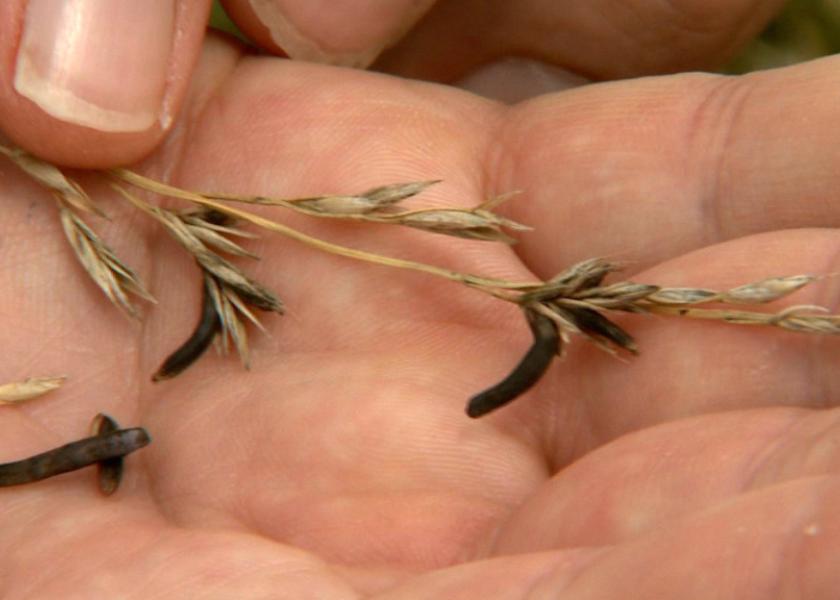Time to Check for Ergot in Grasses

University of Missouri Extension state forage specialist Craig Roberts says now is the time to check for ergot in the seed heads of grasses.
Ergot can cause severe illness in livestock, especially cattle and horses. One early sign is yellow syrup drops called honeydew in flowering seed heads. Honeydew hardens and turns into dark ergot bodies, which look like mouse droppings and are up to 10 times the size of the grain.
The toxic fungus infects the surface of grasses and cereal crops. Ergot can also infect cereal grain screenings, distillers grains and biofuel byproducts. It does not infect corn.
Ergot poisoning from eating infected crops or feed causes “everything we don’t want to see” in livestock, Roberts says. This includes poor weight gain, poor milk production, poor reproduction and even death. “People think it is fescue toxicosis,” he says. “But ergot is on all the grasses with seed heads this time of year, not just fescue.”
Tim Evans, MU Extension veterinary toxicologist, gives symptoms of ergot poisoning:
- Lameness.
- Hair loss and reddening around tops of hooves.
- Sloughing of hooves or parts of limbs.
- Losing tail switches.
- Extreme heat stress.
- Rapid breathing/panting.
- Spending more time in ponds.
- Possible staggering.
- Occasional seizures.
“Ergotism is like fescue toxicosis on steroids,” Evans says. It is not nearly as dependent on ambient temperature. Clinical signs of hoof and tail switch sloughing during the late spring and summer are generally indicative of ergot, he says.
Now is time for forage producers to cut hay to avoid ergot bodies from developing. “If you don’t cut it, those seed will develop ergot bodies,” Roberts said. “Yes, cutting late creates the potential to make bad hay. But remember, the toxicity of the hay may be cut in half by the time you feed it, and ergot bodies may fall off during the cutting and baling processes. Put that hay up as soon as you can.”
If you see ergot, Roberts recommends the following:
- Immediately move cattle from infected pastures.
- Eliminate purchased infected feed.
- Ammoniation may be called for.
Check different areas of a pasture, as ergot may appear in some areas and not others, says Roberts.
MU’s Veterinary Medical Diagnostic Laboratory tests for ergot poisoning and other toxins. Contact Evans at evanst@missouri.edu.







